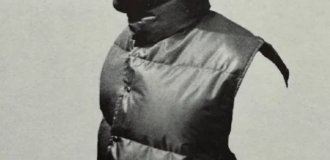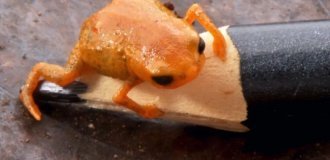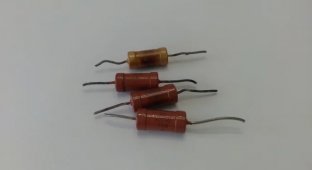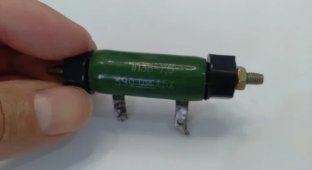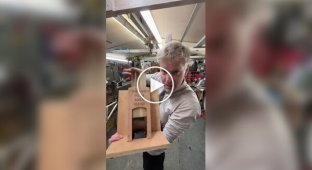I'm Telling You About the Design of KBG-I Capacitors (10 photos)
Hello everyone, my dear subscribers. Today we continue to get acquainted with the design of Soviet radio components and today we have KBG-I capacitors for review, both of these capacitors are 0.01 μF and are rated up to 600 V. 
Grandfathers KBG-I, one of them lost half his leg on his life's journey
The marking of these capacitors is deciphered as follows: K - capacitor, B - paper, G - sealed. The letter after the hyphen indicates the design of this capacitor, in this case I - means that the capacitor is made in a cylindrical ceramic case. 
KBG-I marking close-up
Externally, the capacitor design is a ceramic cylinder with terminals on the sides. The case is painted blue, as you can see in the photo, the color of the cylinder is different for two capacitors, perhaps due to heating during operation or due to exposure to ultraviolet radiation. The terminals are made in the form of caps. The caps are made of brass and then tinned. 
The terminals of the KGB-I are made of brass and then tinned 
The terminals crimp the ends of the ceramic housing 
In the inner part of the terminal bucket, there are small caps for contact with the capacitor plates
Let's move on directly to the working part of the KGB-I capacitor. It consists of two strips made of aluminum foil, separated by a gasket made of capacitor paper. Then this entire structure is twisted into a tube and placed in a ceramic case. 
The ceramic body of the capacitor and its plates, rolled into a tube
All the free space inside the capacitor is filled with oil. In my case, the oil had an unpleasant burnt smell, like waste oil. In general, when disassembling Soviet radio components, you need to be careful, instead of oil, they may contain acids or toxic substances. 
Carefully unfolds the tube of capacitor plates 
If these plates are not held by hands, they will quickly return to the shape of a tube
Pay attention to the place in the photos below that I marked with a red rectangle. This half-cylinder of foil is the place of contact of one of the plates of this capacitor with the caps on the terminals of this capacitor. 
Contact point of the capacitor plate with its terminal
The design of this capacitor is shown in the figure below. Aluminum foil acts as the capacitor plates. Capacitor paper acts as a dielectric. Two strips of aluminum foil (plates) are separated from each other by a dielectric (capacitor paper). Terminals made of the same foil are attached to each of the aluminum foil strips, which are then connected to the tinned brass external terminals of the capacitor. This whole pie of plates and dielectric is twisted into a tube to obtain a compact design and packed in a durable sealed ceramic capacitor case. 
KBGI-I capacitor design
For today, that's all I wanted to tell you about these wonderful capacitors, I hope you found it interesting to read me.
